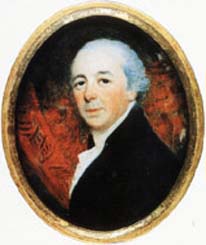John Nash (architect)
| John Nash | |
|---|---|
 |
|
| Born |
18 January 1752 Lambeth, London, England |
| Died | 13 May 1835 (aged 83) East Cowes Castle, Isle of Wight, England, UK |
| Occupation | Architect |
| Buildings |
Regent Street Buckingham Palace Carlton House Terrace Royal Pavilion, Brighton |
John Nash (18 January 1752 – 13 May 1835) was a British architect responsible for much of the layout of Regency London under the patronage of the Prince Regent, and during his reign as George IV. Nash was also a pioneer in the use of the Picturesque in architecture. His best-known buildings are the Royal Pavilion, Brighton, and Buckingham Palace (though the facade facing The Mall is an early 20th-century remodelling by Aston Webb of an 1850s wing by Edward Blore, and thus is not Nash's work). Many of his buildings were built by the property developer James Burton, who also lent him financial assistance when he encountered financial problems during his projects on Regent Street. In return, Nash promoted the career of Burton's son, Decimus Burton, who assisted him with several of his designs and later became a famous architect in his own right.
Nash was born during 1752 in Lambeth, south London, the son of a Welsh millwright also called John (1714–1772). From 1766 or 67, John Nash trained with the architect Sir Robert Taylor; the apprenticeship was completed in 1775 or 1776.
On 28 April 1775, at the now demolished church of St Mary Newington, Nash married his first wife Jane Elizabeth Kerr, daughter of a surgeon. Initially he seems to have pursued a career as a surveyor, builder and carpenter. This gave him an income of around £300 a year. The couple set up home at Royal Row Lambeth. He established his own architectural practice in 1777 as well as being in partnership with a timber merchant, Richard Heaviside. The couple had two children, both were baptised at St Mary-at-Lambeth, John on 9 June 1776 and Hugh on 28 April 1778.
...
Wikipedia
